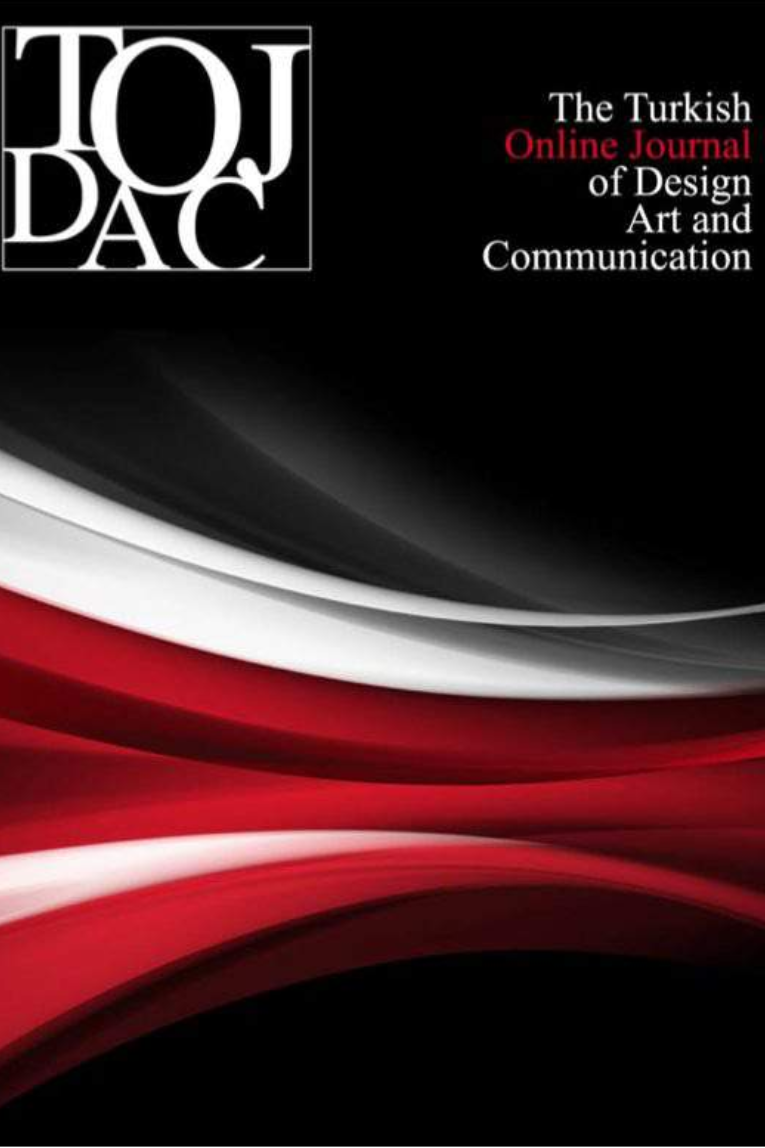NARRATIVES OF A DESIGNER’S COLLECTION: FASHION SHOWS AND ARTISTIC APPLICATIONS
Fashion Shows, Fashion and Art, Fashion and Technology, Narratives of Fashion
___
- Adams, Brittany. (2014). “Spring 2015 Ready-To-Wear DKNY”, https://www.vogue.com/fashion-shows/spring-2015-ready-to-wear/dkny (Accessed on: 23.02.2016).
- Arnold, Rebecca. (2009). Fashion: A Very Short Introduction, New York: Oxford University Press.
- Barnard, Malcolm. (2013). Fashion as Communication, New York: Routledge.
- Barthes, Roland. (2013). Fashion Language, Sydney: Bloomsbury.
- Bourdieu, Pierre. (1993). The Field of Cultural Production: Essays on Art and Literature, Cambridge: Polity.
- Colman, David. (2014). The Cloud-Filled Set of Marc Jacobs’s Fall 2014 Fashion Show, https://www.architecturaldigest.com/story/marc-jacobs-fall-2014-fashion-show-clouds (Accessed on: 02.11.2018).
- Currid, Elizabeth. (2007). The Warhol Economy: How Fashion, Art & Music Drive New York City, New Jersey: Princeton University Press.
- Davis, Fred. (1997). Moda, Kültür ve Kimlik, (Translation: Özden Arıkan), İstanbul: Yapı Kredi Yayınları.
- Duggan, Ginger Gregg. (2001). “The Greatest Show On Earth: A Look At Contemporary Fashion Shows and Their Relationship to Performance Art”, Fashion Theory, 5(3), pp. 243-270.
- Entwistle, Joanne. and Rocamora, Agnès. (2006). “The Field of Fashion Materialized: A Study of London Fashion Week”, Sociology, 40(4), pp. 735-751.
- Finkelstein, Joanne. (1996). Fashion: An Introduction. New York: NYU Press.
- Hong, Hye. Rim. and Kim, Young. In. (2014). “Communication Characteristics of Fashion Show Using Digital Images”, Journal of the Korean Society of Costume, 64(6), pp. 1-15.
- Kepes, Gyorgy. (1996). “Kent Ölçeğinde Dışavurum ve İletişim Üzerine Notlar”, Cogito, 8, 177-190.
- King, Joyann. (2014). “Karl Lagerfeld Stages Chicest Supermarket Ever at Chanel”, http://www.harpersbazaar.com/fashion/fashion-week/a1774/chanel-grocery-store-show/ (Accessed on: 11.06.2016).
- Kuruc, Katarina. (2008). “Fashion as Communication: A Semiotic Analysis of Fashion on ‘Sex and the City’”, Semiotica, 171, pp. 193-214.
- Loschek, Ingrid. (2009). When Clothes Become Fashion: Design and Innovation Systems, Berlin: Berg.
- Marshall, G. and Scott, J. (1998). “A Dictionary of Sociology”, United States: OUP Oxford.
- Mower, Sarah. (2018). “Fall 2018 Ready-To-Wear Gucci”, https://www.vogue.com/fashion-shows/fall-2018-ready-to-wear/gucci (Accessed on: 16.04.2018).
- Odabaşi, Sanem. (2018). “DKNY–City Connection: The Impact Of New York City on the Brand and the Designer”, International Journal of Fashion Studies, 5(2), pp. 373-380.
- Skov, Lise, Skjold, Else, Moeran, Brian, Larsen, Frederik. and Csaba, Fabian. F. (2009). “The Fashion Show as an Art Form”, Creative Encounters Working Paper, 32, Copenhagen: Copenhagen Business School.
- Svendsen, Lars. (2006). Fashion: A Philosophy, London: Reaktion Books.
- The Mercury News, (2018). Photos: Gucci runway show features severed heads, ‘dragon’s puppies’ https://www.mercurynews.com/2018/02/21/photos-gucci-runway-show-features-severed-heads-dragons-puppies/ (Accessed on: 06.09.2019).
- Tungate, Mark. (2006). Modada Marka Olmak: Armani’den Zara’ya Moda Devlerinin Marka Oluşturma Tarzları, (Translation: Günhan Günay), İstanbul: Rota Publication.
- URL-1 (2014). http://tinysparklythings.blogspot.com/2014/03/chanel-goes-grocery-shopping-with-ready.html (Accessed on: 06.09.2019).
- URL-2 (2014). http://www.buro247.me/fashion/news/opening-ceremony-aw14-chocolate-wall.html (Accessed on: 06.09.2019).
- Volonté, Paolo. (2012). “Social and Cultural Features of Fashion Design in Milan”, Fashion Theory, 16(4), pp. 399-431.
- Warf, Barney. (2000). “New York: The Big Apple in the 1990’s”, Geoforum, 31(4), pp. 487-499. Xu, Yi. and Zhang, Mei. (2011). “An Analysis of Marketing Function of Fashion Shows”, R. Wang and L. Huawu (eds.), Advances in Textile Engineering, Switzerland: Trans Tech Publications, pp. 607-610.
- Başlangıç: 2011
- Yayıncı: Deniz YENGİN
A STUDY ON SOCIAL MEDIA USE TENDENCIES: THE CASE OF ERZİNCAN BİNALİ YILDIRIM UNIVERSITY
NARRATIVES OF A DESIGNER’S COLLECTION: FASHION SHOWS AND ARTISTIC APPLICATIONS
KOCAELİ/ KARAMÜRSEL İLÇESİ KIRSAL YERLEŞMELERİ ÜZERİNE ANALİZLER: AVCIKÖY ÖRNEĞİ
Mehtap ÖZBAYRAKTAR, Tuğba YİNELEK
ALMANYA’DA YAŞAYAN TÜRK AİLELERİNİN YENİ MEDYA KULLANIMLARININ İNCELENMESİ
Nebiye KONUK, Hicran Özlem ILGIN
FROM INDUSTRY TO CULTURE: REGENERATION of GOLDEN HORN AS A “CULTURAL VALLEY”
